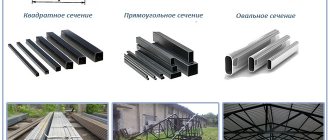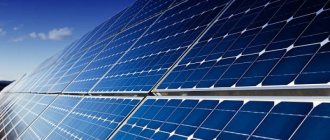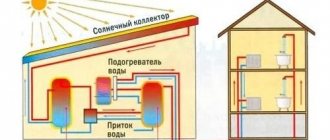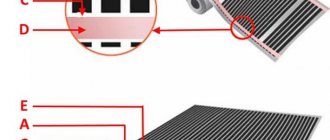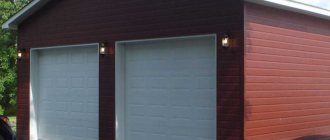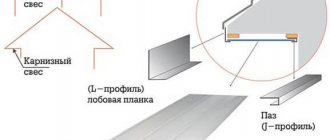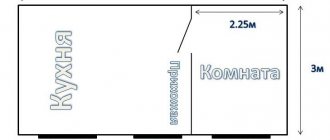The solar panel has dimensions of 510 x 310 mm.
It is equipped with a power cable approximately 3000 mm long. A 1N53 series zener diode is connected to the panel in parallel with the load to prevent the load from delivering too much voltage when solar radiation is high. This panel has a rated operating voltage of 12V, and a rated power of 30W. True, this parameter is indicated for a light energy flux of 1000 W/m2, i.e. In order to get the declared power from this panel, you will have to take it to the Sahara, or better yet, lift it into low-Earth orbit. In this case, the plane of the battery should be oriented perpendicular to the sun's rays, so that ideally you either need to constantly rotate the battery, which complicates the design, or sacrifice power. But in general, the power of the battery allows it to be used to power not very powerful consumers, for example, energy-saving lamps, chargers for consumer electronics, etc. According to the manufacturer, the EMF of the panel can reach up to 21 V; in the author’s case, in far from ideal conditions, the EMF reached 19 V.
Actual data from testing a solar battery in clear weather under direct sunlight are shown in the table. Resistors of the PEV type are used as a consumer. It should be noted that the author's light falls on the panel through double window glass and the angle of incidence of the rays was about 60 degrees.
Consumer resistance, Ohm
| Voltage at battery terminals, V | Current, A | |
| 10 | 5 | 0,4 |
| 20 | 10 | 0,4 |
| 40 | 15 | 0,38 |
| 130 | 18 | 0,15 |
Thus, it is clearly seen that in real conditions in the middle band, the maximum power that can be taken from this panel is 5-6 W. It should be noted that the author’s window faces north-west and direct sunlight hits the battery for 4-5 hours a day through double glass (in summer). In winter, direct sunlight does not enter the room at all. Of course, this placement of the battery is a necessity. It is advisable to make the battery turn after the sun, or at least orient the battery to the south and set it at such an angle that the rays of light fall on the battery at an angle close to vertical.
During the day in cloudy weather, i.e. only in the presence of scattered sunlight, the current drops to 50-70 mA at a voltage of 13-15 V. The EMF in this case is 17-18 V. It is clear that these data are “average temperature in the hospital”, cloudy weather, cloudy weather are different , but in general a small load can be powered from the battery all day long.
One of the main problems associated with solar energy is that the Sun shines during the day, but most people want to use artificial lighting at night. Therefore, without the possibility of accumulating the received energy, the usefulness of a solar battery decreases sharply.
It is possible to connect a solar battery directly to a battery, but for a number of reasons it is not advisable to do so [5]. For the most effective joint use of solar and battery batteries, special controllers are produced. This controller was purchased here
The device is supplied in a cardboard box. The device comes with instructions in English and Chinese.
Module dimensions 135 x 70 x 25 mm.
On the front panel there are control buttons, an LCD screen, terminals for connecting a solar battery, battery and consumer. The body of the device is plastic, but the back wall is made of metal, apparently it should act as a radiator.
Advantages of solar power plants
Power plants running on solar energy have a number of advantages compared to traditional sources:
- Modern installations amplify light in the presence of a large concentration of clouds, using rays that are in the invisible frequency spectrum, which ensures their continuous operation.
- They allow you to combine types of energy obtained from different sources: wind-solar batteries are mainly used.
- Compactness . Portable mobile power stations are made in small sizes, which helps to use them as a home source of electricity.
- Long service life, averaging from 30 to 50 years . By connecting storage batteries, you can store energy and use it at night.
- Save on bills because solar energy is free.
- Cheap, durable and easy to maintain.
Important! A home SES allows you to lead an autonomous existence, independent of the state of the power grid, changes in tariffs and other decisions of the owners of resource companies.
What types of power plants are there?
There are different types of SES, they are classified according to their design and operating principle. Types of power plants:
- Tower solar power plants are a tall structure with a tank on top. This container is painted black to maximize solar energy absorption and is filled with water. As it is exposed to sunlight, the water evaporates and condensation appears. It comes with a steam generator. The efficiency of this solar power plant is 20%, this is a large indicator for alternative resource extraction, which is why it is often used by industrial facilities;
- Disc or modular type. It has almost the same principle of operation as the tower one, but it does not consist of solid material, but is made up of several modules. Installation is carried out on hills, a receiver and a reflector are installed. The receiver receives the sun's rays and transmits them to the reflector, and the reflector converts the concentrated rays into energy. This achievement is often used by the thermal power industry of the Netherlands and the USA (California);
Design of a modular solar power plant - Solar power plant with photo batteries you can easily do it yourself. It consists of a number of photocells with different powers, sizes and other indicators. Such household stations are used in country houses, small industrial facilities, to power individual machines or mechanisms. You can select the required characteristics and assemble portable or mobile solar power plants. In this case, a camping power station can be just one module with a connected battery;
Household Solar Power Panels - SES with concentrators. These are power plants that also include inverters. Such equipment is used where there is not enough solar energy and an increase in efficiency is required in order to achieve the conversion of energy into the required amount of electricity. They are networked machines that are connected to a turbogenerator, and with insufficient efficiency, they increase the concentration of sunlight by changing the angle of the receiver;
Solar power plant with concentrators - Solar balloons or space power plants are the latest word in science. These are sets of special modules (receivers and reflectors) that are located beyond the earth’s orbit, which allows them to receive more sunlight than ground-based solar power plants. The system is very effective, but expensive;
- Combined power plants. These are wind or water sources of alternative energy, working in tandem with solar ones. You can easily make such devices yourself, and you only need to develop a project that will combine the principles of all the systems used. Home alternative energy often combines the capabilities of several types of electricity production. This saves time and money.
Combined power plant
Advantages and disadvantages
A portable or stationary solar power plant is a device that converts the sun's energy, using photovoltaics, into electric current. Sometimes the technology of indirect application of concentrated solar energy is used in various mechanisms. Most often, solar power plants for the home are indirect devices, mirrors or ray reflectors. Their operating principle is based on concentrating a large area of light into a directed beam, the energy from which will go into battery-type storage.
Tower solar power plant
Modern turnkey solar power plant solutions help convert solar energy into current using special photovoltaic cells and photovoltaic processes. Batteries work using tracking systems that seem to “catch” light and direct it to the desired point.
Advantages of using solar power plants:
- Photovoltaic processes occur even when there are clouds in the sky. The human eye does not always catch rays breaking through clouds, unlike tracking devices. This ensures virtually uninterrupted operation;
- Possibility of combining several alternative energy sources. Nowadays, wind-solar batteries are increasingly being used, which combine the capabilities of wind and solar power plants. This tandem works in any conditions, regardless of external factors;
- Even a small device is enough to power an apartment or even a country cottage;
- An autonomous solar power plant is an infinitely renewable source of energy, with an average operating life of 50 years (modular design). Storage batteries can store energy until the system needs it, while the Sun emits light every day - this is a very large resource saving;
- Small solar power plants can be built on private plots, which is impossible for wind turbines;
- If you buy ready-made solar power plants for your dacha, apartment, or house, you don’t have to worry about their maintenance—they won’t need repairs. Among all alternative energy options, solar power plants are the most reliable and durable.
In addition, you will be able to use as much electrical energy in your home as you need without worrying about taxes for exceeding the norm.
But, in addition to the advantages, solar power plants also have disadvantages :
- Geothermal (thermal) stations are quite expensive, they are difficult to buy in domestic stores, in most cases you will have to order them from abroad;
- There is no possibility of using SES at night. Therefore, you need to have large batteries to store energy;
- The main disadvantage of the systems is that even solar power plants with high power can convert only 20% of all solar energy. This means that you lose up to 80% of potential electricity. Please note that tidal ones use up to 70%, and wind ones use up to 40%.
To make the most of the advantages of the system, but at the same time avoid the disadvantages, many manufacturers offer their customers stationary hybrid systems.
How to make a solar power plant at home
To create an SES yourself, you will need to perform the following steps:
- Assembling solar panels for your home or garden with your own hands
- make a careful calculation of the required daily amount of electricity. To do this, you need to calculate the amount of energy consumed by each appliance in the house and sum up these values.
- In accordance with the obtained values, a set of equipment is purchased. You will need the entire kit, starting with the panels and ending with the inverter and switching. The equipment must correspond in its characteristics to the needs of the house, in addition, all devices must be coordinated with each other
- equipment is delivered to the site and installed properly. All elements of the system are connected to each other
- All actions require an accurate understanding of the meaning of the work being performed. If you lack knowledge, it is better to seek help from specialists who can eliminate mistakes and losses of expensive equipment.
How much power does a family need?
On average, one family of three, taking into account a full set of equipment and an electric stove (and these are the ones most often found in houses, because running gas is even more difficult than running power lines) consumes 6-7 kW per day. And this is in an apartment. In the house, consumption will be even higher, because you need to additionally heat water, ensure the operation of the sewage system, and much more. Thus, we can conclude that a 5 kW solar power plant for a home will still not be able to provide everything needed. But if you cut down on your appetite and activate only what you need at the moment, you can get by with that amount. Ultimately, this is still significantly better than no power supply at all. The same refrigerator will be able to work around the clock, like other basic devices. But the TV, computer and other similar devices will have to be turned on only occasionally, which, in principle, is not as critical as it might seem.
Why is this necessary?
I am sure that the question “why” will be the very first in the comments, so I will answer it right away. From an economic point of view, a solar battery on a balcony is unprofitable; unfortunately, the scale of generation is not the same; ideally, you need the roof of your own house. But from a technical and engineering point of view, it is quite interesting in terms of studying new and modern technologies. Plus, don’t forget that modern apartments consume more and more energy, especially taking into account the growing popularity of various “smart” devices, constantly connected routers, smart light bulbs, smart sockets, smart cat feeders and other things. Compensating for these costs with solar energy is, in principle, not so bad and quite environmentally friendly. Well, finally, looking at the electricity meter and seeing “current consumption -100W” on the screen is simply pleasant.
Real output of a solar power plant for a home
The output depends on the power and angle of inclination of the panels, the intensity of the sun and the length of daylight hours.
Batteries differ in area, which affects their power. It can be 10W, 100W, 150W, 260W and so on. However, the actual output of the panel is usually higher than its rated power, since the solar intensity factor must be taken into account. In the southern regions the sun shines stronger and longer, and in the northern regions it shines weaker and less, so the same panel produces different amounts of electricity.
Case Study
This is a graph of electricity production from one 260W panel for June 2021. The total output of the station for the month is 34.89 kW. Based on the calculation that the nominal monthly power of the battery is 7.8 kW (260 W X 30 days), its actual power turned out to be 4.5 times higher (correction factor). In summer it is larger, in winter it is smaller or absent altogether.
The graph shows that production is not constant and there are sharp drops - these are cloudy days, when daylight hours are shorter and solar activity is very weak. The worst performance was recorded on June 17 - about 0.4 kW, and the maximum on June 25 - about 1.4 kW.
And this is what the output of a solar battery looks like hourly during the day:
Production starts around 9am, peaks around 1pm, then gradually declines and stops around 7pm. During the day there are small dips - when the sun was hidden by clouds.
Power generation was unstable from approximately 1:00 pm to 3:00 pm due to cloud cover. But this did not greatly affect the final performance of the station - 1.32 kW.
There were many failures during the day, which affected the final output of the station - 0.98 kW.
And this is a cloudy rainy day, when solar activity is very weak and the generation during the day was 0.45 kW.
From this we can conclude that relying entirely on solar electricity is difficult. The performance of the station is highly dependent on the intensity of the sun and even in summer it can be inconsistent due to cloudy weather.
Installation of panels
How to mount the panels correctly and where to install them? The answers to these questions depend on the design of the security systems and the capabilities of their owner. The only thing that everyone without exception should take care of is maintaining the angle of inclination. For each region this angle will be different, and it depends directly on the latitude of the area.
The table shows the best recommendations. And if the angle of inclination is not planned to change during the year, then you can simply follow its data. Changing this parameter at least 2 times a year will significantly increase the battery efficiency.
On average, in winter the angle of inclination should be 10°...15° higher than the optimal value, in summer - by the same amount - lower. Statistics on solar energy in various cities can be found in the FORUMHOUSE section.
How to connect if there is electricity on the site
If the site is connected to the network, then installing a solar power plant will make the house more energy independent, reduce energy costs and even make money on it thanks to the feed-in tariff.
- DIY solar cell assembly
There is no battery in this connection scheme, since there is no need to store electricity (but if you want to have a backup power source in case the lights go out, then a battery is required).
To connect such a station, you only need a solar battery (or several), which is connected to an outlet through a network inverter. In this form, the station is already ready for operation. The battery generates electricity and you immediately consume it for internal needs: running the refrigerator, lighting, kettle, etc.
Photo of real power plant connection
For example, the station’s daily output is 1 kW of electricity, and the building consumes a total of 5 kW. In fact, you only take 4 kW from the network. But if the station produces 5 kW per day, and you actually consume only 2 kW, then the remainder (3 kW) is burned. In this case, you can connect a green tariff and sell the difference to the state at a higher price, or install a battery and accumulate the excess for it.
Now there are companies that connect green tariffs on a turnkey basis. Starting from the selection and installation of the station to the conclusion of an agreement with OBLENERGO.
The wire
Connecting solar panels and connecting them to each other is done with a cable with a conductor cross-section of 4 mm² - this is the standard minimum. It is not recommended to go below this figure, although sometimes 2.5 mm² is used, but this is an extreme case (if there is only one module, low-power).
You can take a thicker one - the electrical losses do not increase, but even, on the contrary, decrease, since the resistance decreases, but the price will increase significantly. There are special calculators on the Internet.
The wire must be resistant to cold and fire (−30...+120° C), with reliable UV-resistant insulation. Special stores sell cables already “sharpened” for SB.
Do-it-yourself autonomous solar power plant for home
It is not difficult to assemble your own solar station; it contains only four components:
- solar panels;
- battery charge;
- controller;
- inverter
Solar power plant diagram
All of them are easy to find and order through online stores. But how to make a solar power plant with your own hands in order to create a full-fledged autonomous power supply system at home? First, you need to collect information about your needs, the capabilities of the area where the solar station will operate, and make all the necessary calculations for selecting the components.
How to calculate the number of solar panels
Choosing a solar station begins with searching for information on insolation in your area - the amount of solar energy that hits the earth's surface (measured in watts per square meter). This data can be found in special weather reference books or on the Internet. Typically, insolation is indicated separately for each month, because the level is highly dependent on the season. If you plan to use the solar station all year round, then you need to focus on the months with the lowest indicators.
Next, you need to calculate your electricity needs for each month. Remember that for an autonomous power supply system, not only the efficiency of energy storage plays a role, but also its economical use. Smaller needs will allow you to save significantly when purchasing solar panels and creating a budget version of a solar power station with your own hands.
Compare your electricity needs with the level of insolation in your area and you will find out the area of solar panels that is needed for your solar station. Please note that the efficiency of the panels is only 12-14%. Always focus on the lowest figure.
- DIY absorber assembly for a solar collector
Thus, if the insolation level in the most unfavorable month in your area is 20 kWh/m², then with an efficiency of 12% one panel with an area of 0.7 m² will produce 1.68 kWh. Your energy requirement, for example, is 80 kWh/month. This means that in the least sunny month, 48 panels (80/1.68) will be able to satisfy this need. You can read more about how to choose solar panels in our previous article. And here you can learn how to make candles at home.
How to choose solar panels
Solar panel device
At first glance, all solar panels are the same: the cells of solar cells are interconnected by busbars, and on the back side there are two wires: plus and minus. But there are a lot of nuances in this matter. Solar panels come from different elements: amorphous, polycrystalline, monocrystalline. I will not advocate for one type of element or another. Let me just say that I myself prefer monocrystalline solar panels. But that's not all. Each solar battery is a four-layer cake: glass, transparent EVA film, solar cell, sealing film. And here every stage is extremely important. Not just any glass is suitable, but with a special texture, which reduces the reflection of light and refracts light incident at an angle so that the elements are illuminated as much as possible, because the amount of energy generated depends on the amount of light. The transparency of the EVA film determines how much energy reaches the element and how much energy the panel generates. If the film turns out to be defective and becomes cloudy over time, then production will drop noticeably.
Next come the elements themselves, and they are distributed by type, depending on quality: Grade A, B, C, D and so on. Of course, it is better to have quality A elements and good soldering, because with poor contact, the element will heat up and fail faster. Well, the finishing film should also be of high quality and provide good sealing. If the panels become depressurized, moisture will quickly enter the elements, corrosion will begin, and the panel will also fail.
How to choose the right solar panel? The main manufacturer for our country is China, although there are also Russian manufacturers on the market. There are a lot of OEM factories that will paste any ordered nameplate and send the panels to the customer. And there are factories that provide a full production cycle and are able to control product quality at all stages of production.
How can you find out about such factories and brands? There are a couple of reputable laboratories that conduct independent tests of solar panels and openly publish the results of these tests. Before purchasing, you can enter the name and model of the solar panel and find out how well the solar panel matches the stated characteristics. The first laboratory is the California Energy Commission, and the second European laboratory is TUV. If the panel manufacturer is not on these lists, then you should think about quality. This doesn't mean the panel is bad. It’s just that the brand may be OEM, and the manufacturing plant also produces other panels. In any case, the presence in the lists of these laboratories already indicates that you are not buying solar panels from a fly-by-night manufacturer.
How to install a solar panel
For the best efficiency, the solar panel should be installed so that the sun's rays fall on it at an angle of 90 degrees. Since the sun constantly moves across the sky, there are two solutions:
- Dynamic installation. Use a servo to make the solar panel rotate as the sun moves across the sky. The servo drive will allow you to collect 50% more energy than a static installation.
- Stationary installation. To get the most out of the fixed position of the solar panel, you need to find the installation angle at which the panel will collect the maximum possible amount of sun rays. For year-round operation, this angle is calculated using the formula +15 degrees to the latitude of the area. For the summer months this is -15 degrees to the latitude of the area.
How to choose a charge controller
Another way to build your own solar power plant and make it work efficiently is to use a charge controller that allows you to track maximum power points (MPPT). Such a controller can store energy even during low light conditions and continues to supply it to the battery in an optimal manner.
How to choose a battery
So, energy from solar panels goes to the battery. This allows energy to be stored so that it can be used even in the absence of sunlight. In addition, batteries smooth out uneven energy supply, for example, during strong winds or clouds.
Installing solar panels may require a large roof slope
To correctly select and install a battery for a home solar power station with your own hands, you need to consider two parameters:
- It is very important that the charging current (from the panels) does not exceed 10% of the rated capacity level for acid batteries and 30% for alkaline devices.
- Low side voltage inverter design.
Consider battery self-discharge rates (not always indicated by manufacturers). For example, acid devices are recharged every six months to avoid breakdown.
How to choose an inverter
Description of parameters and mandatory functions of an ideal inverter:
- sinusoidal signal with distortion not exceeding three percent;
- when a load is connected, the voltage amplitude changes by no more than ten percent;
- double current conversion - direct and alternating;
- analogue AC conversion part with a good transformer;
- short circuit protection;
- overload reserve.
When modeling your home's electrical system, group the loads so that different types of loads are powered by different inverters.
Assembly, tilt angle
We will briefly describe the installation itself, how to connect solar panels, since fastenings and other nuances are also separate topics. Installation consists of fastening the panels to the frame; there are several types of fasteners and brackets: on slate, on metal, tiles, hidden on the roof sheathing.
We advise you to read: how to mount solar panels on the roof correctly.
Support rails, clamps, clamps (end and central) guides are purchased or included in the kit for the selected installation option.
The connecting butt elements create a frame from fixing slats. Terminal elements and conductor holders are also used - they combine aluminum frames and ground them, fixing cables.
If installation is carried out on a roof with a slope, then the optimal angle for panels is 30... 40° in northern latitudes, for example, 45°. In general, for self-cleaning of modules by rain, the angle should be at least 15°.
These positions are created with support profiles, often making a convenient, collapsible, adjustable, rotating structure.
When the array is illuminated unevenly, the panel in a brighter place produces more current, which is partially spent on heating the less loaded solar panels. To eliminate this phenomenon, cut-off diodes are used, soldered between the planes from the inside.
How much does a solar power plant cost?
The main factor influencing the cost of a solar power plant is its future total capacity. Taking into account the costs of installation, commissioning and paperwork, it ranges from $0.8-1.0 per 1 kW. The floating price range is formed due to secondary factors - “branding” and quality of equipment and complexity of installation work.
The cheapest option is to buy used equipment from Europe. The disadvantage of such an acquisition is obvious, and is associated with the impossibility of objectively assessing the real efficiency of the station and the remaining service life of the panels.
Distribution of costs for SE
The second most expensive option is the purchase of budget components from little-known Chinese companies. Their equipment is 20-30% cheaper than batteries, inverters, accumulators and peripherals from companies from the world-famous TIER-1 Bloomberg rating, but is inferior in quality and durability.
Therefore, before purchasing, experts advise considering only the third option and basing calculations on how much a solar power plant for a home from trusted manufacturers will cost.
Here are some of the most popular examples.
How much does a 5 kW solar power plant cost?
Approximately, you will need to purchase the following kit for the cheapest network SES:
| Accessories | Qty. | Price, $ |
| Panels 250-275 W | 18-20 | 1800-2200 |
| 5 kW inverter | 1 | 700-900 |
| Electronics and peripherals | 700 | |
| Total: | ~ 3500 |
Table of the estimated cost of a solar power plant for 5 kW
Taking into account the costs of turnkey delivery, which will include the registration of a “green tariff” and a multi-tariff meter with ASKUE, the total amount will be approximately $ 4800 .
An autonomous station will cost a little more, since it will require inclusion in the list of high-quality batteries, but the exclusion of a meter from it and registration of permits for the “green tariff”.
How much will a 10 kW solar power plant cost?
The calculation principle here is almost the same. You will need to purchase:
| Accessories | Quantity | Cost, $ |
| Panels 250-275 W | 36-40 | 4000 |
| 10 kW inverter | 1 | 1400 |
| Electronics and peripherals | 1300 | |
| Multi tariff meter + installation | 1400 | |
| Total: | ~ 9100 |
Table of estimated cost of solar power plant for 10 kW
How much does a 30 kW solar power plant cost?
There is no need to make any fundamental changes when determining the total cost of such a second, more powerful solar power plant. However, the following consideration must be taken into account.
Such a station will require more than 100 batteries of 250-275 watts, or about 200 square meters. meters of free space. Replacing with more efficient 300-400 watt panels will save some space, but the southern slopes of the roof of even a large house may not be enough. Therefore, it will be necessary to consider the option of installation on the ground. But the area of the free area will have to be almost doubled in order to prevent the shadow from some obliquely installed modules from falling on other neighboring ones.
If this is not a problem, you will need to allocate about $25-26 thousand, or almost 700 thousand hryvnia, for the purchase.
However, the payback of such a solar power plant will not exceed 5 years, and then it will begin to generate a constant income of more than $4,000 annually.
It has been noted that the price of the kit always approximately corresponds to its power and amounts to $1000 per 1 kW.
Connecting multi-directional elements
When using a sequential solar panel installation scheme, in order not to reduce the efficiency of the devices, all panels of the common circuit should be placed at the same angle and on the same plane.
If the panels are located in different planes, this may lead to the fact that the closest or more illuminated one will work more powerfully than those located a little further away.
This means that the near panel will generate electricity, some of which will be released to heat the distant panels. And the reason lies in the fact that current flows along the path of least resistance. To minimize losses, it is better to use a separate controller for each panel.
The main requirements when using the controller are the power of the connected panels over 1 kW and the distance between the batteries at a sufficiently large distance
The issue can also be resolved by installing cut-off diodes. They are placed inside between the plates. Thanks to this, while delivering maximum power, the plates do not overheat.
The voltage drop in the connections, as well as the wires themselves, of the low-voltage part of the system is also important.
Table of discrepancy between the transmitted power and the wire cross-section, indicating in red the parameters at which there is a risk of strong fire heating
An example is the fact that on a meter piece of cable with a cross section of 4 mm2, when a current of 80A (voltage 12 V) passes, the values drop by 3.19%, which is 30.6 W. When twisting is activated, the voltage drop can vary from 0.1 to 0.3 V.
Reviews
Judging by the reviews existing on the Internet, a fairly large number of people speak positively about the installation of such devices. Solar power plants for home, reviews of which can be found, are usually installed in remote parts and have no analogues in terms of convenience, comfort and cost. Yes, they really are still too expensive to fully replace centralized supply. But, firstly, this is only for now, and secondly, sooner or later such a power plant pays for itself and begins to save money. As was already said at the very beginning, cheap stations will help you gain profit within 5-10 years. Expensive and more powerful models rarely pay for themselves longer than 40 years. Some people have longer mortgages. One-time serious expenses will still be compensated, but you will have to pay for central electricity until the very last days of your life.
Sources used:
solarpanel.today, term.od.ua, energo.house, www.syl.ru, altenergiya.ru, sovets24.ru, www.asutpp.ru, m.habr.com, motocarrello.ru


